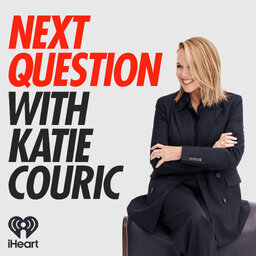How can we feel less alone during — and after — COVID-19?
Long before the coronavirus upended our lives and distanced ourselves from our jobs, routines, and loved ones, loneliness was already considered a widespread issue. But now, whether you're living alone or surrounded by people, that feeling of loneliness is probably more profound than ever. On this episode of Next Question with Katie Couric, Katie talks with former surgeon general Vivek Murthy about how dangerous this human condition can be, not only to our emotional health but also our mental and physical health. In a discussion around his new book, "Together: The Healing Power of Human Connection in a Sometimes Lonely World," Katie and Dr. Murthy talk about ways to mitigate our loneliness and how to use this time of isolation to appreciate and strengthen our relationships. Later in the show, massage therapist David Lobenstine shares a few techniques — to use on yourself or on one of your quarantine partners — to help relieve the effects of this longterm stress and loneliness. Sign up for Katie's morning newsletter, Wake-Up Call, at KatieCouric.com for more information on today's episode, the coronavirus, and the day's most pressing news.
Learn more about your ad-choices at https://www.iheartpodcastnetwork.com
 Next Question with Katie Couric
Next Question with Katie Couric


